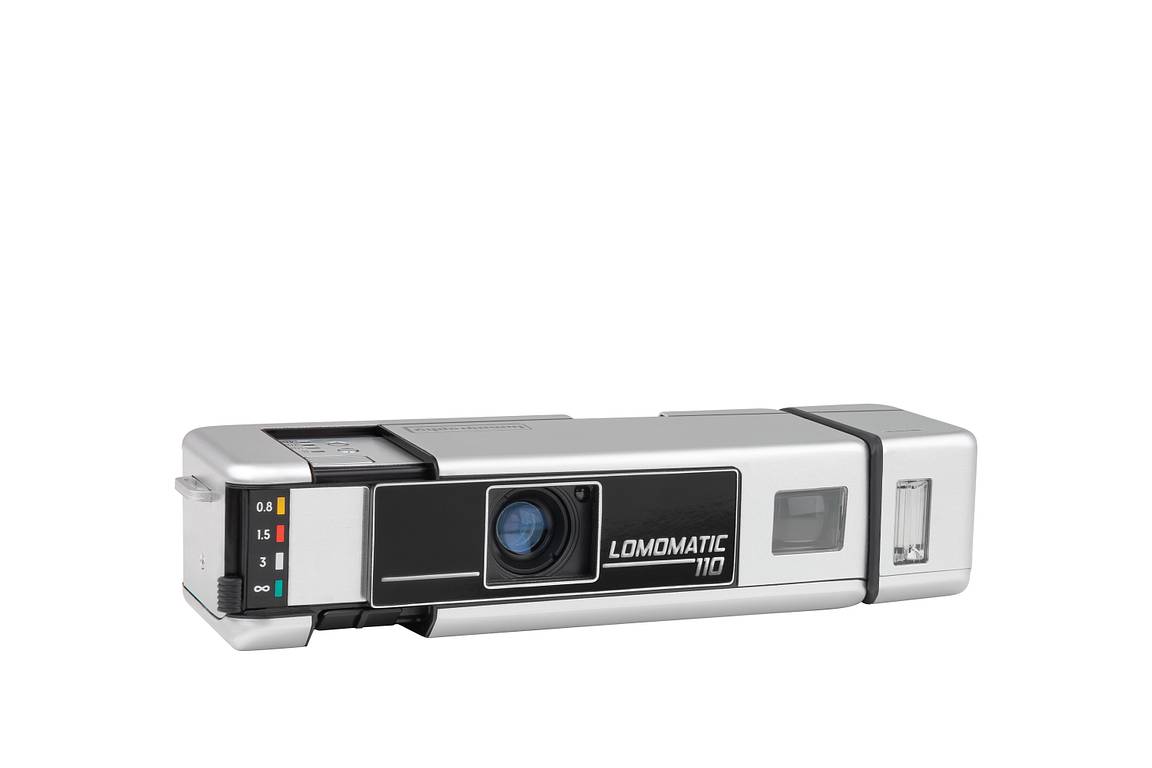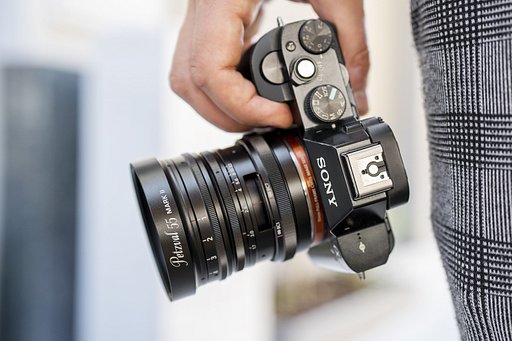Tiny Negatives, Huge Prints: EveNSteve Embrace the Lomomatic 110 in their Latest Exhibition at Hayfield Art Gallery
1 8On a stretch of farmland near the border of New York and Vermont, a showcase of Lomographic experimentation vividly captures the eyes of those passing on the road. Photographer and author duo EveNSteve recently opened their latest exhibition at their very own Hayfield Art Gallery, featuring large-scale prints of images captured exclusively with our pocket-sized Lomomatic 110 camera.
The largest exhibition of 110 photographs ever, No One's Home is photographed by Steve and written by Eve, taking viewers on a visual journey through the themes of uncertainty and longing. Today we're chatting with the couple about their inspirations behind creating this work, the process of making it, and more about their creative endeavors.
Hi Eve and Steve, welcome to Lomography Magazine! Can you please introduce yourselves to our audience and tell us a bit about the work that you do?
Yes! We are a husband-and-wife creative team specializing in artworks and short films. Up until recently we worked separately, Eve as an author, and Steve as an artist, photography mentor, and YouTube creator.
Shortly before the pandemic began we started experimenting making art together combining our strengths: Steve’s images and Eve’s words. Then the pandemic hit and everything stopped; galleries and museums closed, shows were cancelled- suddenly engaging with art in person seemed almost impossible.
We both have a strong belief that art helps people make sense of the world. During this time of great uncertainty, we felt strongly that art was more important than ever, but we needed to find new ways to bring artwork to people safely. That is when we came up with the concept of the Hayfield Art Gallery, which consisted of creating monumental artworks—very large photographs with hand painted text— in the hayfield across the street from our house. Everyone who happened down our road, whether on foot, bicycle, or by car, could experience it. We put in a mowed path for those who chose to park and walk the field, which is our favorite method of engagement with the show.
It turned out to be a significant turning point in our work: where our previous works were smaller and more delicate, these had to be durable and stand up to the elements — rain! snow! bird shit! — not to mention legible from a road that was up to a hundred feet away.
After that first exhibition in 2020 we ended up with five artwork scaffoldings in the field and an incredibly positive response from the community. We had a brief tussle with the local Zoning Administrator over whether these were “billboards,” which are illegal in Vermont, but we argued successfully that they were not billboards, in fact, but a gift of artwork to our community. Ever since then we have mounted a new exhibition in the hayfield every Spring, which stays up for the entire year.
Tell us about the story behind this exhibition. What message were you hoping to portray to its viewers?
The exhibition this year is entitled No One's Home, and it is a bit like a fairy tale. It tells the story of a girl who is exploring a pastoral landscape in search of answers. We were thinking a lot about this particular moment in time and wanting to address cultural feelings of uncertainty, while referencing social strategies for controlling chaos through storytelling.
The text in the show flows from one image to the next. It total it reads: “Come listen to the tale of a girl / she stole through the meadow as quick as a bird / To find the three sisters / And learn the secret of the gold scarf / Was no one home? Was someone inside?”
In particular, we were thinking a lot about post-pandemic ambivalence, and the changed perspective that going through a collective, life-changing event can engender. Steve often uses Eve as the model in his artworks, and in this series of images the female figure morphs, becoming at times an old woman, a young girl, or mythological figures.

How did the release of the Lomomatic 110 inspire you to bring this exhibition to life?
This is the five-year anniversary of the Hayfield Art Gallery, so we wanted to do something special and powerful. Because we are both children of the seventies, we have fond memories of working with the 110 as our first camera. The opportunity to work once again in this “long-lost” format was an exciting challenge, and one which we found compelling from both a technical and aesthetic point of view. We often find inspiration in taking materials and working with them in unexpected ways, so using a tiny negative to make fifteen, twenty, and even thirty-foot artworks was something that immediately appealed to us.
Have you found that shooting with a 110 camera changed any of your photographic perspectives or habits?
Steve is known in the industry as a leader in the field of hybrid photographic film technologies and innovative printing techniques. He photographs exclusively with traditional film cameras, and his overall process is one we refer to as “Figital” — which stands for film plus digital— incorporating elements of both traditional and new technologies.
To Steve’s mind, great photography often incorporates play. The directness of the 110 camera and the inherent limitations of the extremely small negative spoke to that sense of play for us and allowed Steve to create work using its simplicity as means of arriving at a moment of authenticity. Similarly, Steve’s 2004 book and exhibition Through a Glass Darkly used Holga cameras and instant materials to create a uniquely evocative body of work that addressed the “joy of photographic imperfection.”
How did you use the technical features of the Lomomatic to create the distinct look of the images on display? Were there any specific creative choices that you made?
The number one thing Steve loves about working with the Lomomatic is the bulb exposure option. The works in No One's Home employed long, hand-held exposures which softened the edges of the image and provided the unique photographic look he was envisioning. Additionally, having the ability to have multiple ISO settings gave him the option of pushing or pulling film in development to address difficult lighting conditions.
Did you face any challenges when printing tiny 110 negatives into large-scale prints?
Printing big— really big— is always fraught with challenges. The biggest challenge in No One's Home was figuring out the proper scanning technique that would deliver the image quality with a resolution that could be up-sampled to the scale of the final artworks. The ultimate solution Steve landed on is super top-secret, but if you buy him a very cold martini he might tell you.
What are your hopes for the future of the 110 format?
Our hope is that additional new film stocks will soon become available for 110. Lomography currently has a super solid selection of films that Steve enjoys working with, but we are living in a golden era of film photography, and there are so many films out there that would be incredible to shoot in this format.
Along those lines, Steve would love to see reloadable 110 film cassettes become available: this would really be a huge game changer, enabling a wider family of films to be used in the Lomomatic, enticing other photographers to work in 110. Imagine using Kodak TriX or Ferrania P-30 in the Lomomatic 110! We’re all about more creative options for photographers.
Is there anything else you'd like to share?
Another thinking-outside-the-box innovation for EveNSteve was filmmaking. We can all agree that most art loses a LOT in translation to the internet. So, we decided to use independent moviemaking as another medium. Our films are short and experimental, using elements such as panning, sound and voice-over to tell the story of the artwork in a different forum. Essentially, our films are artworks about artworks.
Our newest film chronicles the creation of No One's Home and evokes the experience of the field in the show, as well as the story told by the work itself. Folks can watch the resulting 14 minute film, and all of our award-winning films, at evensteve.com.
Thanks EveNSteve for joining us and sharing your project! If you'd like to keep in touch, you can follow them on Instagram. More about their project and their short film can be found on their website.
written by alexa_alexiades on 2024-08-19 #gear #people #art #experimental #exhibition #lomomatic-110




























One Comment